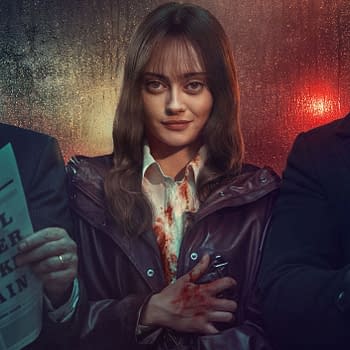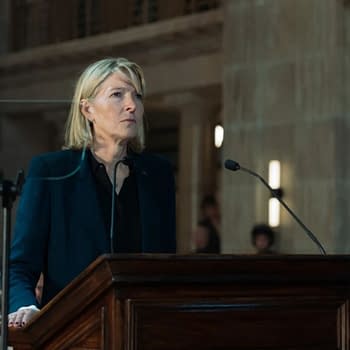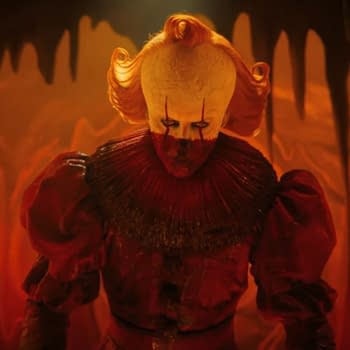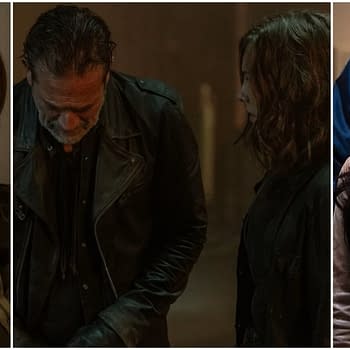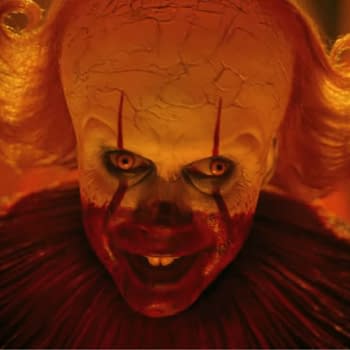Posted in: BBC, Doctor Who, TV | Tagged: bbc, doctor who, jo martin, jodie whittaker, Morbius Doctors, Philip Hincliffe, timeless child
Doctor Who Producer: Morbius Doctors Scene "Wasn't Thought Out At All"
Philip Hinchcliffe, the producer of Doctor Who in the 1970s, has admitted that the "Morbius Doctors" moment from 1976 led to the current controversial "Timeless Child" storyline that was just thrown together and he and the writers never thought it through. That moment came from the 1976 "The Brain of Morbius", a pastiche of the Frankenstein plot, where the 4th Doctor fought Morbius, a renegade Timelord whose brain was the only part of his body still intact as he tried to take over the universe. As they faced each other in a psychic battle, images flashed on the screen that was said to be of the Doctor's previous – and unknown 8 regenerations – alongside the faces of the 1st (William Hartnell), 2nd (Patrick Troughton), and 3rd (Jon Pertwee) Doctors appeared.
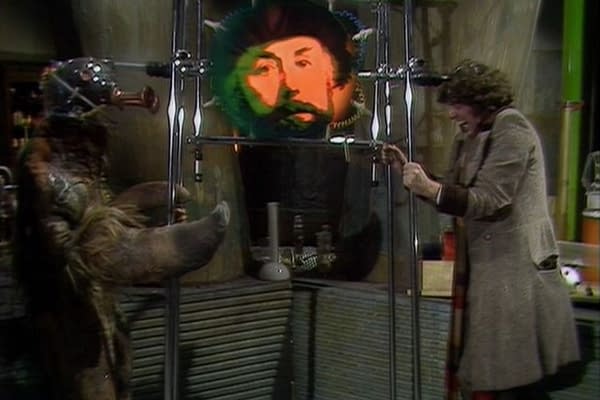
Fans have been arguing about where those unknown 8 regenerations fit in the Doctor's timeline and exactly how many regenerations he's gone through when Timelords were only supposed to have 13 regenerations before they run out of lives. Philip Hinchcliffe even said, when interviewed in the 1996 reference book Doctor Who: A History of the Universe, "It is true to say that I attempted to imply that William Hartnell was not the first Doctor." Current showrunner Chris Chibnall used that moment for his "Timeless Child" storyline in the show to blow up the Doctors history to reveal she had a near-endless history of lifetimes that were erased from her memory. Hardcore fans howled in rage and protest and launched endless rants on YouTube.
In an interview with the Radio Times, Hinchcliffe admitted the scene was "totally ad-hoc" and it "wasn't thought out at all." He said the original plan had been to feature well-known actors as pre-Hartnell Doctors as a throwaway gag – but a snag resulted in members of the production team, including Hinchcliffe himself, had to pose for the shots. Among the other 7 men was co-writer of the story Robert Holmes, director Douglas Camfield and then-production assistant Graeme Harper, who would go on to direct the show during the Peter Davison era in the 1980s and even several of David Tennant's episodes in the new show.
"We suddenly get a got a call – I think it was one of the production days when we were in the studio, probably rehearsing," Hinchliffe explained. "I think it was George Gallaccio, who was my sort of associate producer, who said they'd got a problem. I don't know if Equity got onto it or whatever, but we couldn't afford to have all these actors [in the photographs], each one being paid.
"He said, 'We need as many people as possible down in the photographic studio – now.' And so anybody who was in that day working on the show, or could be grabbed during that lunch hour, was corralled and marched down to wardrobe. I think [Doctor Who writer] Bob Banks Stewart happened to be there talking about another script, so he was marched off…
"We all piled down there and they just put all these funny hats on us all and shoved us in front of a camera. So it was totally ad hoc, really. It wasn't thought out at all. In fact, I don't think [script editor] Bob Holmes or any of us really thought about the repercussions of all these previous incarnations of the Doctor. We hadn't thought about it."
Let's face it, Doctor Who continuity is a mess. It has over 40 years of contradictory continuity errors that hardcore fans have been arguing endlessly about the contradictions and trying to make sense of it all. When Russell T. Davies revived the show in 2005, he declared that everything that happened on the show should be considered canon, but not other media. It's funny to think that a throwaway gag became a huge point of contention for the show's lore. In the 1970s, the producers and writers of genre shows like Doctor Who didn't worry about lore or whether continuity was consistent. They were journeymen writers and producers who brought their intelligence and skills to making a show, were constantly under budgetary and time pressure, and were often circulated out to other shows at the network. The notion of mythical lore was only a major concern in comics and genre novels.
It's interesting to see how much has changed in TV writing now when lore is a sacred thing and to mess around with it can be a creative decision with potential business and financial repercussions. Doctor Who is a prime example of that.





